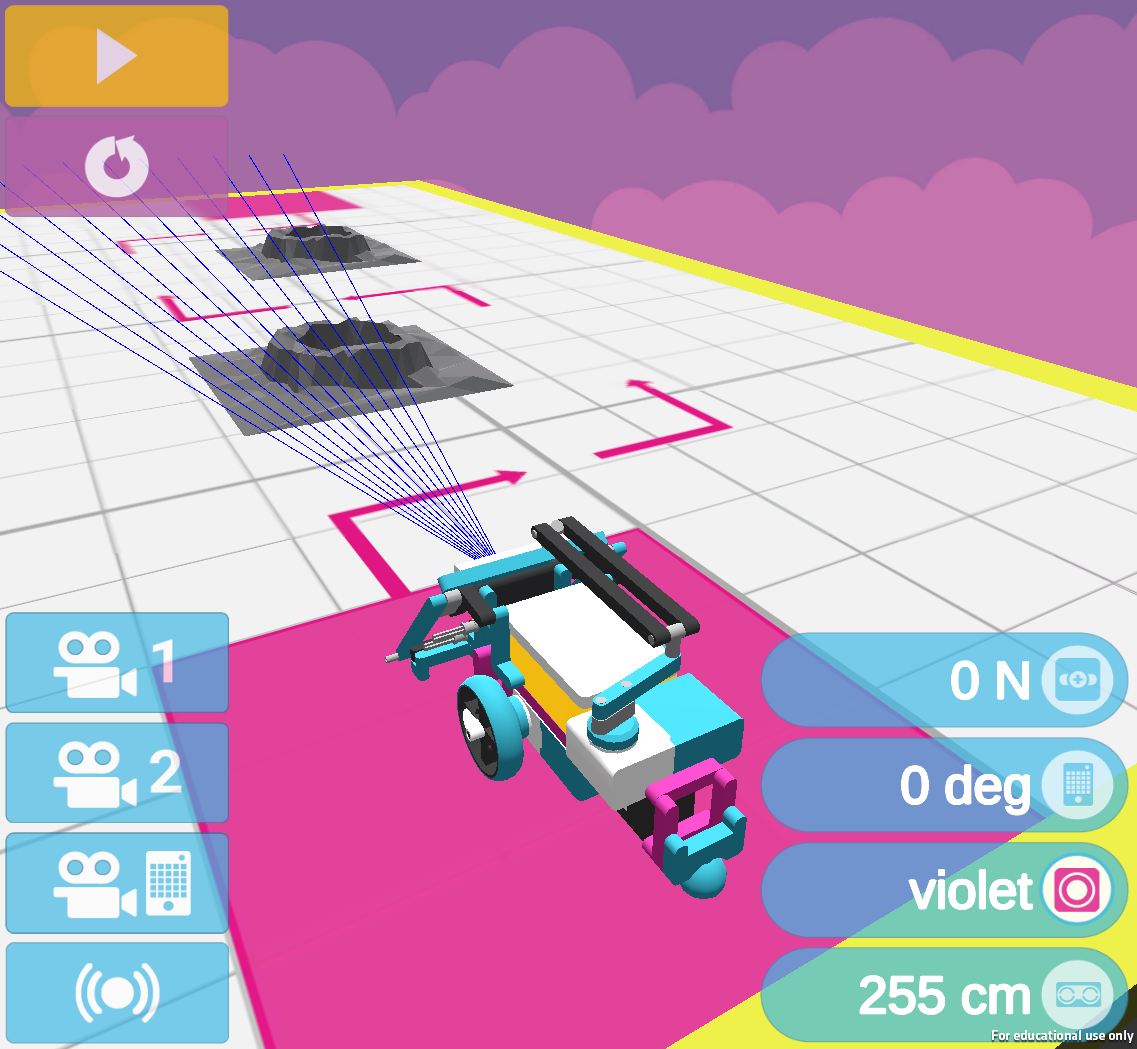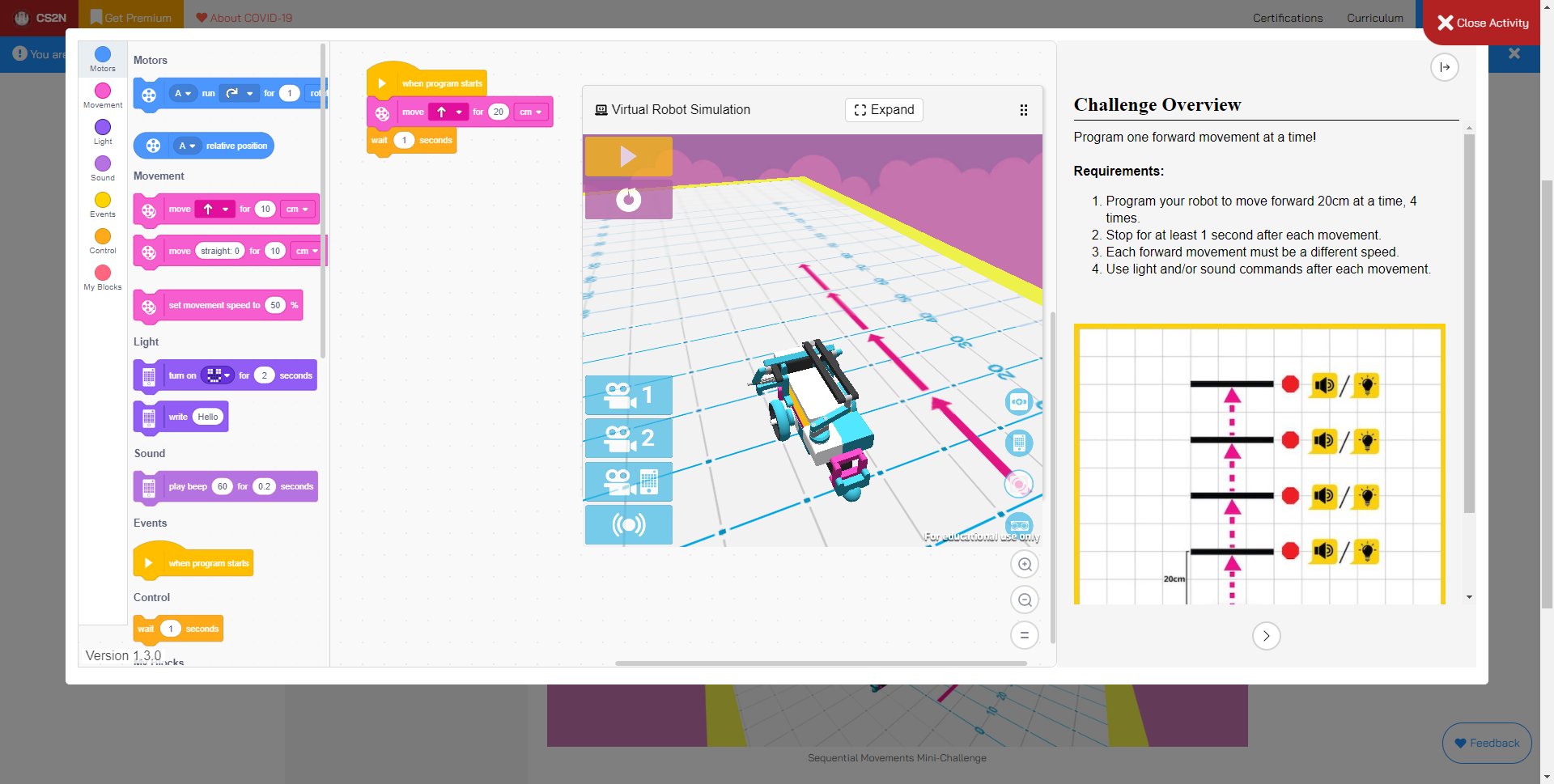Coding and Computational Thinking with Virtual SPIKE Prime features a programming interface and virtual robot embedded directly within the curriculum. Teachers and students can follow along with the included videos, animations, challenges, and step-by-step lessons. The projects are designed to get students thinking about the patterns and structure of not just robotics, but also programming and problem-solving more generally. The scope and sequence of this virtual curriculum are very closely aligned to our Coding and Computational Thinking with SPIKE Prime curriculum for physical robots, allowing teachers to leverage both physical and virtual robots to best suit their needs.
The Coding and Computational Thinking with Virtual SPIKE Prime curriculum is broken down into 8 units: Getting Started, Programming the Hub, Robot Movement, Wait Until & Sensors, Loops, Discrete Decisions, Capstone: Subterranean Challenge, and Continuous Decisions. Over 75 programmable virtual environments are embedded throughout, allowing students to learn big ideas in robotics, coding, computational thinking, and mathematics.

The virtual robot itself contains simulated versions of the programmable motors, sensors, and other components. A built-in sensor dashboard allows students and teachers to quickly inspect the values the robot sees, speeding up the process of developing and troubleshooting their code.

Coding and Computational Thinking with Virtual SPIKE Prime takes a just-in-time and embedded approach. As students make progress through the course (which the Learning Management System keeps track of), CS2N ensures sure that students are presented with the corresponding instructions, virtual environment, and programming interface. CS2N automatically saves student code progress with each activity so that they never lose it and teachers never have to track it down. Virtual activities can be run as many times as the student needs to foster their understanding, and their completion is automatically awarded so that students know when to move on.

Once they have a license, teachers and students can use the curriculum whether they’re at home, school, or anywhere else in the world as long as they have an Internet-connected Chromebook, Windows PC, and Mac.
Topics
- Getting Started
- Programming the Hub
- Robot Movement
- Wait Until & Sensors
- Loops
- Discrete Decisions
- Capstone: Subterranean Challenge
- Continuous Decisions
Changelog
Version 1.x.x
